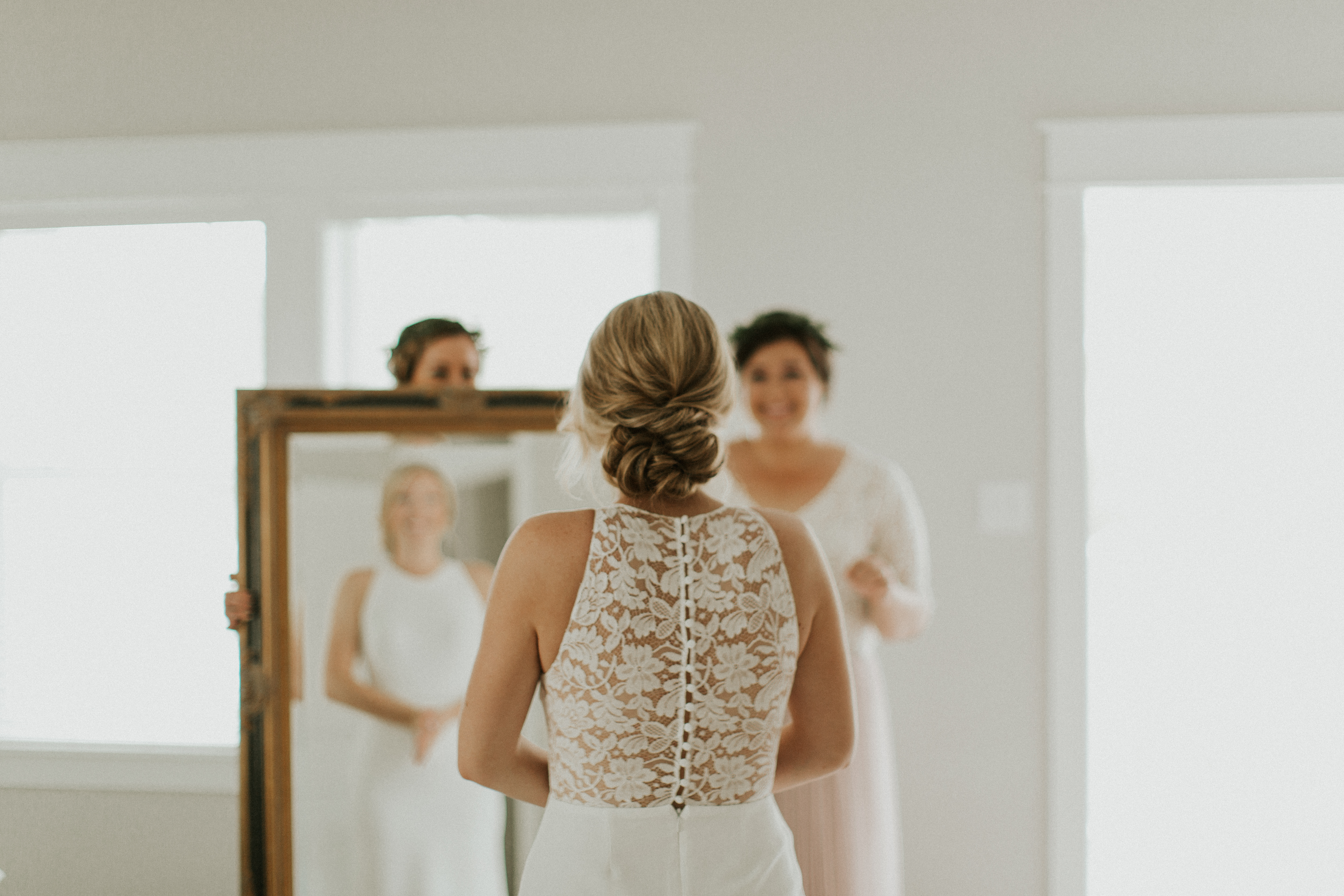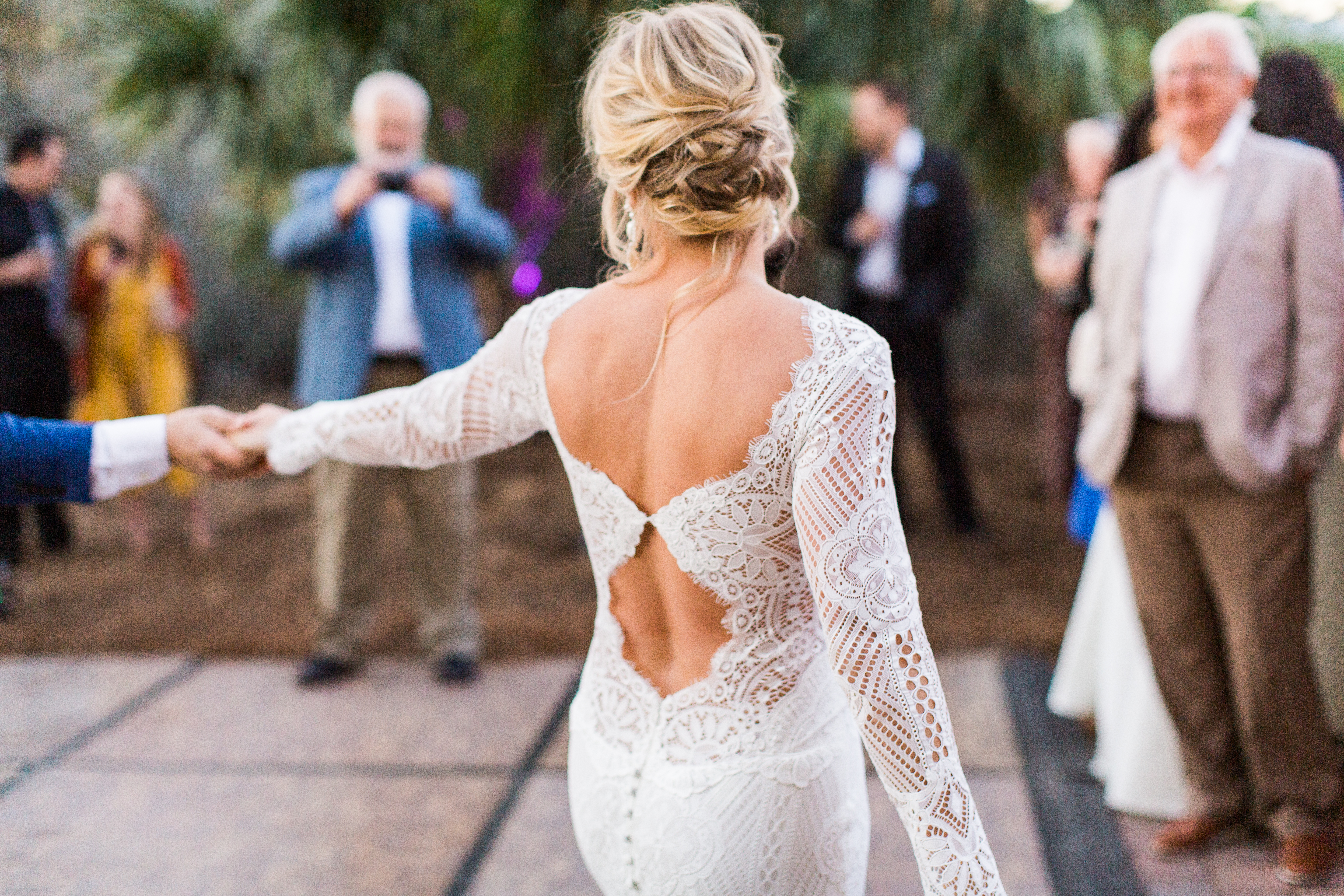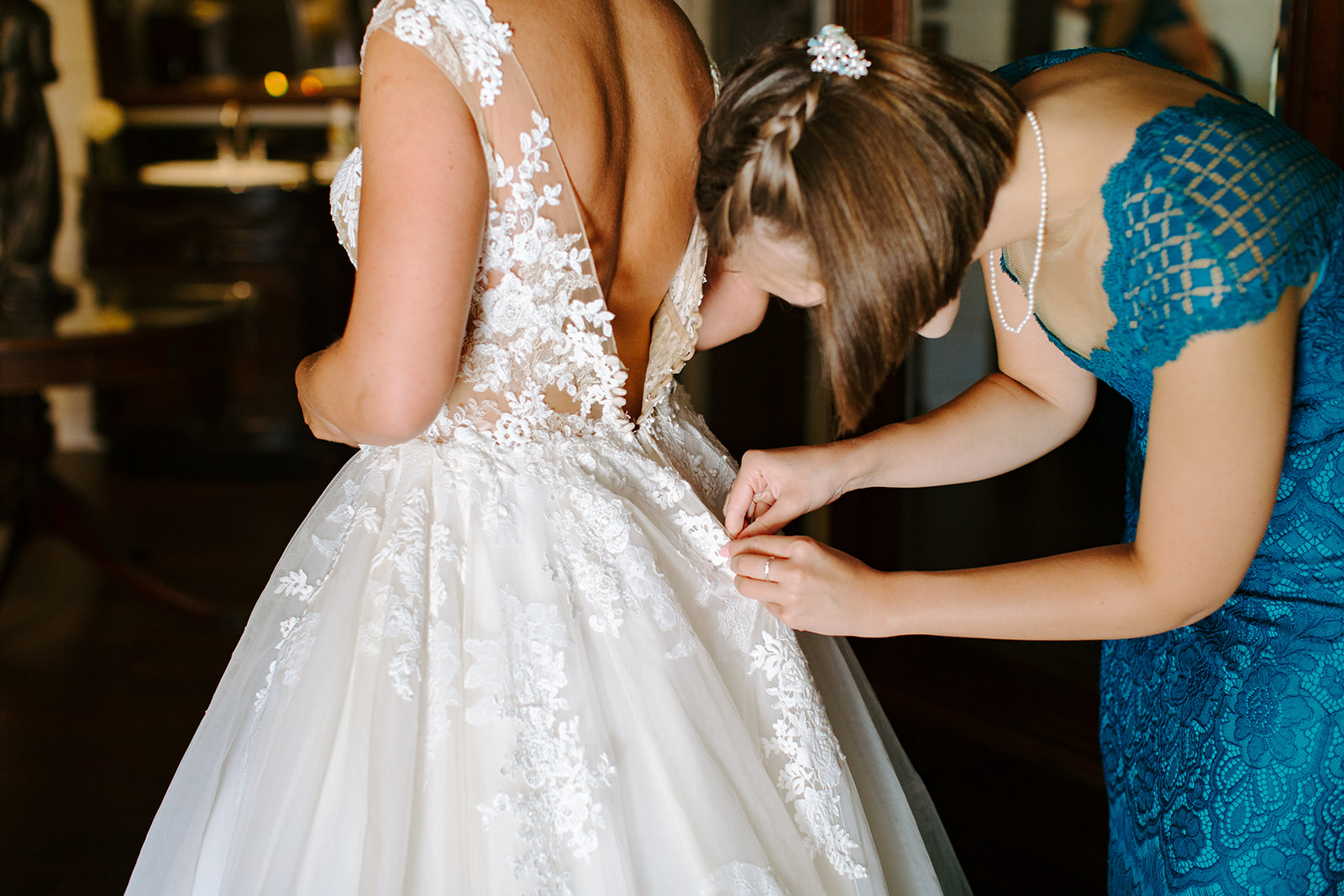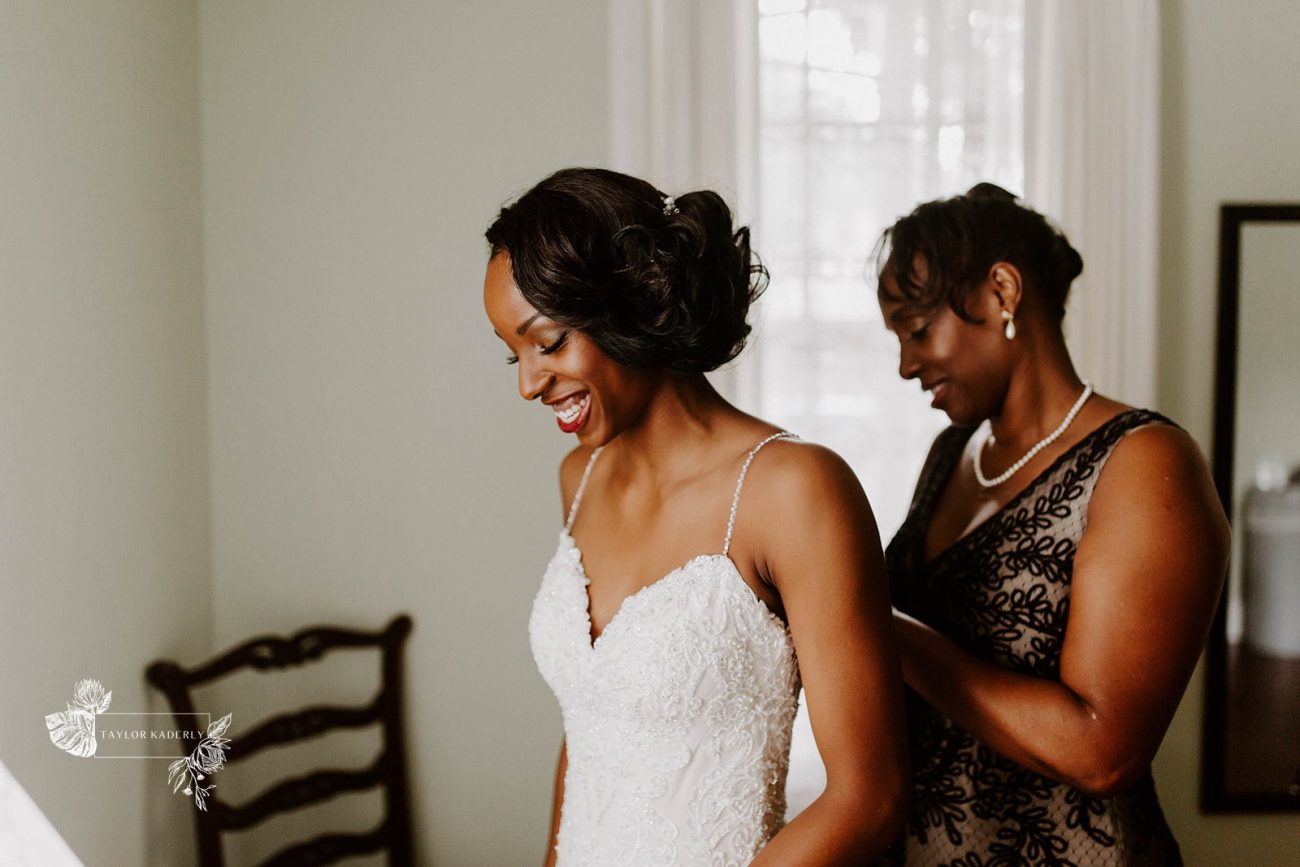7 Tips for Dress Fittings
By Rebecca Padgett
The first time you try on “the one,” it’s magical. I will admit I had the feeling that everyone says happens, but personally, what was even more magical was seeing my dress fit me after a seamstress worked her magic. Why? Because it fit me perfectly for the first time without clips and pins distracting me from the beauty and detail of my dress. Below are some helpful hints for making the most of dress fittings.
- Timeline
The timeline of selecting, purchasing and fitting for a dress is very important. You should plan on purchasing your dress at least seven months out from your wedding, if not 9-to-12 months before. This allows you time to find the one and then have the dress made and/or shipped to the bridal store. Rarely will you be able to buy a dress right off of the rack. It can take a dress anywhere from a month to six months to arrive. Most wedding dresses do not fit perfectly, and this is the one outfit you wear in life that you’ll want tailored to you. It’s best to do your first fitting three months prior to the wedding as this allows ample time to do multiple fittings, if need be. Three months out also makes sense as you are less likely to experience noticeable weight loss or gain in that time period.
2. Budget
Being transparent, I wish I had known how much alterations would cost beforehand. The alterations are definitely worth it, and I understand the price now that I know all of the craftsmanship and precision that goes into altering a wedding dress — which can be full of layers, lace and delicate details. Budget for a minimum of $500 for most alterations. That again depends on what all you have done or need done to your dress. My seamstress was wonderful because she explained what each alteration or addition would cost, checked to make sure that was OK with me, and made price adjustments where she could if there was a less pricey option.

3. Bring Along
It is vital to bring along the shoes you plan to wear. Many seamstresses may not even let you schedule if you don’t have your shoes yet. Shoes are important in the length of the dress, especially if you are wearing heels that add a few inches. You should also bring along the undergarments that you plan to wear on your wedding day. These items are essential for a seamstress so that she knows what she is working with as far as fit and length. I personally brought along the jewelry that I plan to wear, wore more makeup than usual, and pulled my hair up in a similar fashion to how I plan to wear it. This really helped me to envision myself on my wedding day and get even more excited about it all. Aside from items, you will likely bring along people. I don’t recommend bringing along as many as you brought to find your gown. This can be overwhelming for all, especially since they’ve already seen your dress. I only brought my sister, who is one of my two maids of honor. I do recommend bringing along at least one other person to the final fitting so they know how to bustle your dress.
4. Selection
I would begin by asking your bridal store about seamstress recommendations. Many have in-house seamstresses, have ones who will come to the store, or have trusted companies they have sent brides to for many years. Another option is to ask around to friends and family in the area where you’re getting your dress. Lastly, you can always check out a company’s reviews and work online. I personally recommend seeking out a seamstress who specializes in all things bridal. Wedding dresses take another level of talent as many are works of wearable art. A talented and experienced bridal seamstress is worth the investment.

5. What to Expect
It’s very rare to find a dress that fits just right. If you have to get alterations or make multiple alteration visits, this is completely normal. Your first appointment will likely last around an hour. You will meet with your seamstress and discuss any concerns you have about fit or additions you would like to make. They will then ask you to try it on and will get to pinning. Be prepared for a lot of standing — but also for falling even more in love with your dress.
6. Speak Up
Your seamstress should give you the opportunity to voice your wants, concerns and opinions. From there, they will provide you with their own thoughts and expert opinions on what should occur with your dress. Throughout the process, you should speak up if something doesn’t feel or look right. You should be able to move easily and comfortably in your dress. Try sitting, dancing and walking. Your dress should stay in place, and there should be no drastic shifting as you move. There should not be any areas where your dress wrinkles, bunches or pulls. As a rule of thumb, your dress should skim your shoes. If something doesn’t look the way you envisioned or makes you feel uncomfortable, communicate this with the seamstress.

7. Ask Questions
Don’t be afraid to ask questions, whether it be about adding something to your dress or about the care of your dress. Your seamstress will have the answers, and this is your time to access their knowledge. Ask about care and cleaning tips such as ironing, steaming, spills, lost buttons, and preservation after the wedding. Again, bring along someone to help you with bustling and any other aspect of your gown that may need attention to on the wedding day.




